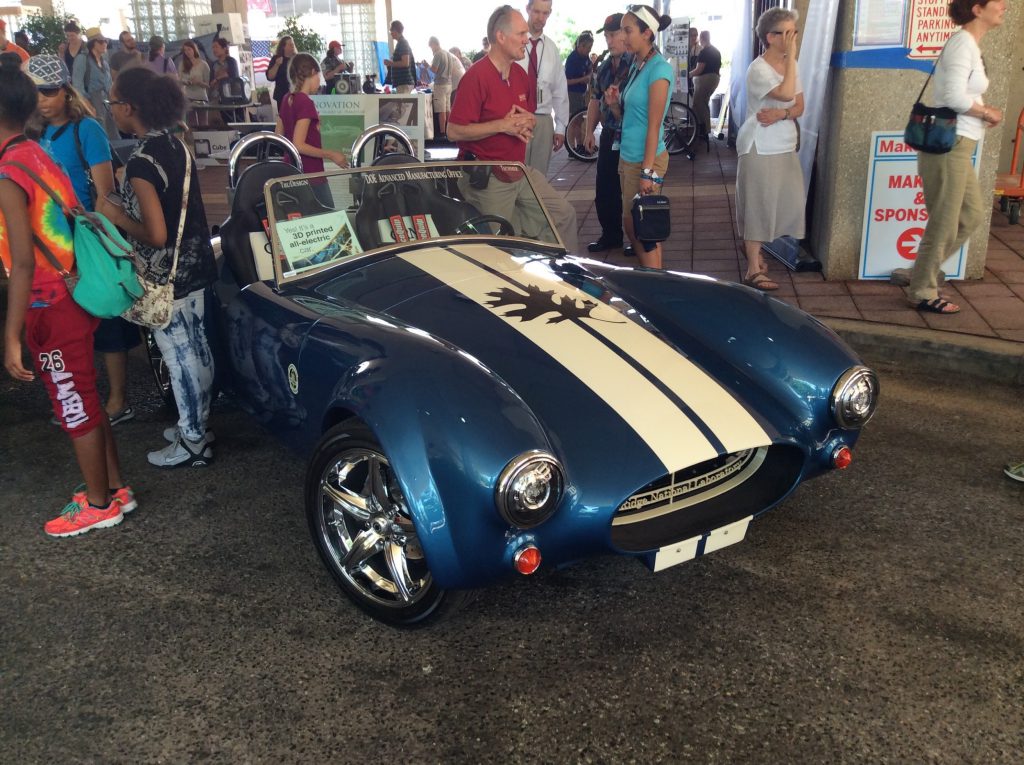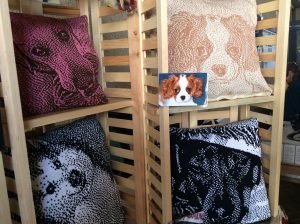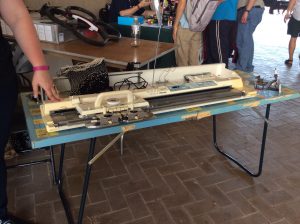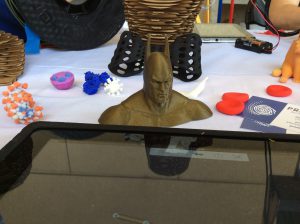
Taking in the sights as the faire visits the nation’s capital.
The National Maker Faire is an annual gathering of tech enthusiasts, crafters, educators, tinkerers, hobbyists, engineers, artists, and students. Launched in the Bay Area in 2006, the faire is primarily designed to be innovative, showcasing makers who are exploring new forms and new technologies. The faire features innovation and experimentation across the spectrum of science, engineering, art, performance and craft. This year, the faire featured local inventors from the community in a “DC showcase,” in addition to makers representing communities across America.
The Alliance for American Manufacturing's own Caitlin Musselman and Bailey Pilgreen traveled to the faire last week. Here’s what they saw.
Hundreds of inventors, creators and makers displayed their impressive creations during the National Maker Faire, which came to Washington, D.C. on June 12-13 and held at the University of the District of Columbia. We braved the 90 degree weather to check out the displays, from solar powered cars to precision laser cut wooden board games.
Upon entering the faire, we spotted a young woman with a 1980’s electric loom set up in front of woven pillows with images of dogs printed on them. She introduced herself as Andrea Zehner, the founder and creative mind behind Mad Knitting Lab, a custom knit pet portrait company based out of Madison, Wisconsin.

Zehner explained her process, in which she takes a picture of a dog on her iPhone and programs it into her loom, which then begins to stitch the picture together. She then uses recycled pieces of fabric from couches and chairs to create a back to the pillow, finishing the look. The finished product looks professional grade and is the perfect gift for any animal lover.

We continued to walk through the faire when a 10-year-old boy stopped us and introduced us to Morphi, a mobile app that enables you to create a 3D model of a picture you designed. He had us draw a few simple pictures of a flower and a tree, which he then converted into schematics that can be sent to a 3D printer to be created. We actually got to see our design printed right there in front of us! He may have been young, but he knew everything there is to know about Morphi.
Across from Morphi was a table strewn about with 3D printed skulls, busts, octopi and other miscellaneous items. Representatives from PrintHumanHUBS explained how they want to use 3D printing to teach kids about science and how the body works at Discovery Place, a children’s museum in Charlotte, North Carolina. After discussing the possibilities of 3D printing human tissue and organs (bio-printing) — and snapping a few pictures of their 3D rendition of Batman — we were off in yet another direction, following the direction of the booths.

A couple of tents over sprawled the Boogie Board, an LCD display that doesn’t use any electricity to operate. The colorful boards were easy to write on and are manufactured in the USA, which (of course) sounded great to us. Beside us, a young girl was drawing a picture of a palm tree using a stencil and her father was sending himself PDF lists using the Board’s computer connection abilities.
We then ventured yet again under shaded protection from the heat and ended up talking to representatives from the Department of Energy about their completely 3D printed car — that’s right, a 3D printed car (minus the tires, lights, seats and windshield). The vehicle runs off an electrical engine and has racing seats, so naturally we asked when we’d be able to buy one. One of the representatives laughed and explained that while it wasn’t yet street legal, the department is beginning the process of road certifying it. Within a few years, more companies will likely be using 3D printing technology in the manufacturing process, including in the auto industry.
After looping back around and checking out some wooden creations and Lego inventions, we talked to NASA for a few minutes about different things that the agency has been developing for manned space missions. We looked at some space food and talked to a few people about different ideas for habitats on the moon and beyond.

By then, the heat was driving more and more people under tents and into symposiums so we ventured to the final frontier of our National Maker Faire exploration — the education and LCD section. We checked out a wooden LCD clock display and a few different tables with information and pamphlets for educators showing the benefits of teaching engineering and innovation in the classroom.
We then passed back by the buzzing robots and drones and headed to the Metro station, all the while discussing the exciting and innovative things that we had seen.
If the Maker Faire is heading to a city near you we recommend that you check it out. It’s a great place to take creative minds of all ages to see the incredible things being created right here in America. You can find one near you here.
